
Cosdon Hill Triple Stone Row
This site is featured on the Okehampton: Belstone and Cosdon Hill walk. These photos are of the Cosdon Hill Triple Stone Row (SX64329159 Butler Vol. 2. Map 40, 6). The triple stone row is headed by a cairn and the length of still visible stones is 146m although the triangular slab down the hill is a possible terminal stone giving an overall length of 176.5m. The last 2 photos provide evidence of pixies living on the route to South Zeal!
Some of the stones of the row were re-erected in 1896 by R.H. Worth and Sabine Baring-Gould and the Dartmoor Exploration Committee and a partial excavation was carried out on the cairn at the end of the row. Two cists were found in the cairn one of which was intact but the other had been robbed of the cover stone and two side stones. The relevant extract of the report is included below as it is instructive as to the reasoning behind the very many restorations carried out the the Committee - they were deeply concerned with preserving these sites.
These photos were taken on the 13th June 2010.
See also: Guide to Dartmoor Stone Rows
Bibliography & references
Butler, J. Dartmoor Atlas of Antiquities: Vol. 2. - The North (Devon Books, 1991)
Extract from the Third report of the Dartmoor Exploration Committee (1896)
Source: Report & Transactions of the Devonshire Association Vol. 28 (1896)
We pass now to the consideration of the stone rows and kistvaens. On the east side of Cosdon, on North Tawton Common, is an interesting series of lines of upright stones, that start from a cairn surrounded by a circle. There are traces of an inner circle buried in the cairn. On the east side of the cairn are three blocking-stones, from which start three stone rows, tolerably parallel. The uprights are small, and the rows have been sadly mutilated. Masons are now, and have been for years, at work all over this portion of the Moor, breaking up large stones for wallers, or removing such as they deem suitable for gate-posts. Three of the upright stones have been removed since 1894. Unhappily, a large slice of common, consisting of many acres, has been recently enclosed and walled round. The wall is incomplete, and is still being worked at, and every available stone is taken for the construction. A Moor road of ancient date traverses the rows; but as this road has been in process of time cut down deep into the soil and runs with water, those going after turf and bringing it home prefer to leave it and go upon the grass, and so have broken or knocked away nearly the whole of the series of stones that lies to the east of the road. Only such stones as were insignificant - did not interfere with the cart-wheels - were left; and some of these are mere stumps, of which the tops have been wilfully knocked off, for the convenience of the carts. Owing to the extreme danger of destruction to which this set of rows was exposed, application was made, through the Vicar of South Tawton, to Charles Farsdon, Esq., as lord of the manor of South Zeal, to which this portion of the Moor belongs, for the protection of the rows, and he kindly undertook that orders should be given that the rows should not be further molested; but it was necessary to re-set up the fallen monoliths, to ensure their recognition, and secure them from being removed. This was undertaken, and the rows were further planned by Mr. R. H. Worth. The stones are small, and even insigniticant. There is not one which could not be manipulated by a couple of men. Nevertheless, the rows are interesting, and indeed have a peculiar interest of their own.
They do not run in a direct line, but take a serpentine course in places; but this is entirely due to the fact that in certain parts the rock rises so near to the surface that it was not possible for the stone-planters to affix their blocks in the straight line without boring sockets in the rock; consequently they made a sweep to avoid these spots.
The cairn from which the rows start was partially explored, and was found to have contained two kistvaens ; one is intact, but the other had been robbed of coverer and two side stones. The footstone of this one, the central interment, had served as headstone to the second kistvaen. Whether there had been another interment was not ascertained, the western portion of the cairn having been much plundered. When one kistvaen is described as intact, this does not imply that it had not been opened. The coverer had been removed, and the interior had been despoiled, but all the stones composing it were there. It was observable that the axis of one kistvaen and that of the second were not the same, and both somewhat different from the direction of the lines of stones. It is probable that the first kistvaen was covered with stones and earth before the first line of stones was planted: consequently the stone-planters had nothing to guide them, except a general direction. When the second kistvaen was constructed, only the footstone of the first was exposed, and the stone chest was constructed, utilizing it; then covered, and the second line of stones planted parallel to the first. That the third line was in connection with a third interment is probable, but not substantiated by any evidence, owing to the mutilation of the monument.
A second small cairn on the side of Cosdon was examined, but nothing was found in it.
Cosdon Hill Stone Row


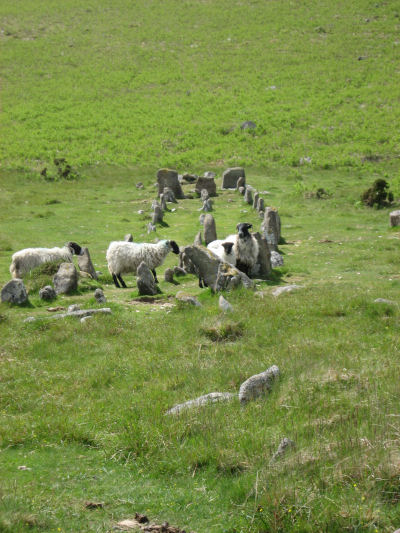

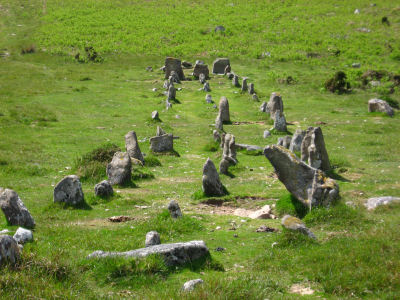

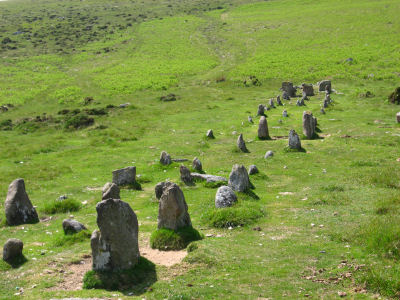
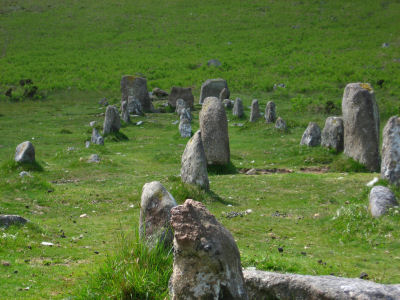
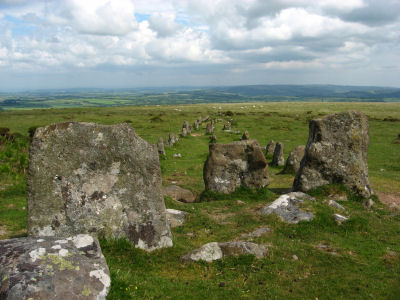
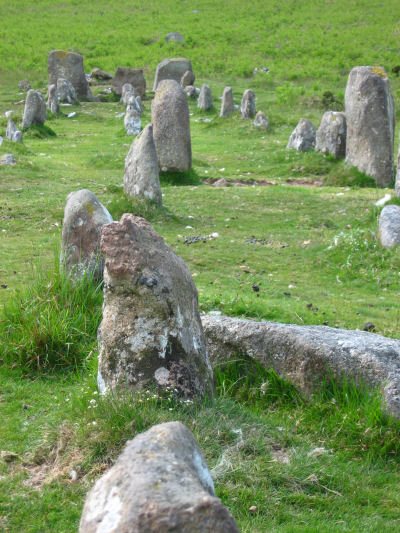
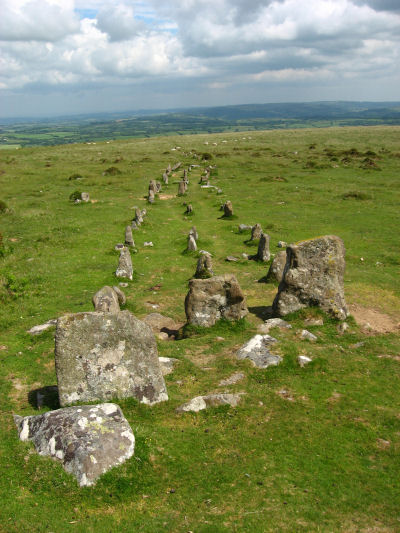
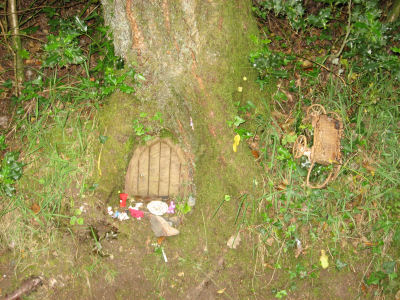
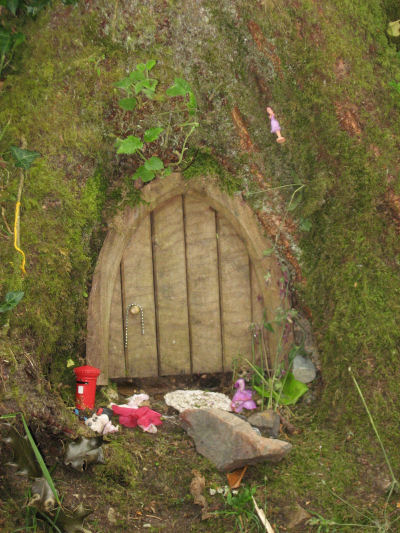
Page last updated 16/12/12